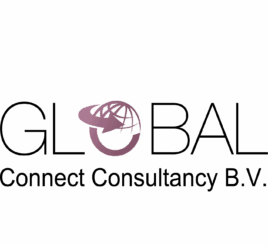
In the competitive landscape of international investment, Germany and France stand out as two of Europe’s economic powerhouses. Both countries offer distinct advantages for foreign investors, ranging from strategic geographic positions to robust innovation ecosystems. This article explores and contrasts the key factors that make each nation attractive for foreign direct investment (FDI).
Germany: Europe’s Industrial Engine
1.Strategic Location at Europe’s Heart
Germany’s central location provides direct access to the European Union’s vast internal market of 450 million consumers, as well as the emerging economies of Central and Eastern Europe. As the EU’s largest economy by GDP and population, Germany is a critical gateway for businesses aiming to scale across Europe.
- World-Class Infrastructure and Logistics
Germany boasts one of the world’s most advanced transport networks, with nearly 230,000 km of roads and 38,000 km of railways, serving as a major logistics hub for continental freight movement.
- Innovation and Technological Leadership
“Made in Germany” remains a global benchmark for quality and innovation. Backed by a high-skilled workforce and rigorous vocational training systems, Germany leads in patent filings in Europe and ranks second globally behind the U.S. in patent submissions. Close ties between industry and academic institutions support a thriving R&D environment.
- Government Support for R&D
Germany promotes equal treatment for foreign and domestic companies in research funding. In 2023, German firms filed around 25,000 patent applications with the European Patent Office, confirming its role as an innovation leader.
- Megatrends Driving Transformation
Germany is addressing major global shifts—climate change, digitalization, an aging population, and geopolitical tensions—through strategic investments in AI, electric mobility, renewable energy infrastructure, and circular economy initiatives.
- Social and Economic Stability
Germany’s robust social welfare system underpins quality of life, while a stable tax system funds infrastructure, education, and healthcare, creating a secure and predictable environment for long-term investments.
France: Europe’s Rising Investment Star
- A Geostrategic Gateway
France’s location at the crossroads of Europe and Africa makes it a vital logistics and business hub. As the world’s 7th-largest economy and 4th in Europe for export revenue, France is becoming an increasingly dynamic market for investors.
- Rapid Business Setup and Regulatory Reforms
Thanks to administrative reforms, France now offers one of the fastest environments for business creation in Europe—just four days to launch a company, compared to eight in Germany.
- Leading R&D Incentives
France ranks third in Europe and seventh globally for R&D spending. It also offers one of the most generous R&D tax credits among OECD nations: 30% of expenditures up to €100 million. France ranks just behind Germany in patent filings and leads Europe in researchers per employee.
- Decarbonized and Affordable Energy
With 88% of electricity from low-carbon sources—primarily nuclear—France offers businesses competitively priced, decarbonized energy. The “France 2030” plan has earmarked €27 billion to further industrial decarbonization.
- Talent and Productivity
French universities are internationally respected, and France ranks high in labour productivity—€65.60 per hour in 2023, significantly above most European peers. The country also has a higher share of tertiary-educated adults than Germany.
- Strategic Foreign Investment Projects
France has attracted major FDI across various sectors:
- AI & Cloud: Microsoft (€4 billion) and Amazon (€1.2 billion) are expanding data centres.
- Green Mobility: Skeleton Technologies will invest €600 million in next-gen battery production.
- Healthcare: Pfizer, AstraZeneca, GSK, and others are scaling up R&D and manufacturing operations.
- Finance: Institutions like Morgan Stanley are strengthening their Paris presence, affirming France’s growing status as a financial centre.
- Reindustrialization and Local Revitalization
President Emmanuel Macron’s pro-investment agenda includes tax cuts, labour code reforms, and streamlined industrial land access. High-profile investments—such as McCain’s €350 million factory modernization and Solvay’s €100 million rare earths facility—underscore a national push toward modern, sustainable industry.
Conclusion: Two Models of Attractiveness
Germany remains a stalwart of stability, industrial strength, and technological depth—particularly attractive for investors in manufacturing, engineering, and scientific R&D. France, on the other hand, has rapidly evolved into a business-friendly, innovation-forward economy with bold energy and digital strategies, making it an increasingly compelling alternative.
For investors, the choice between Germany and France may depend on sector focus, speed of market entry, energy needs, or R&D incentives. But one thing is clear: both nations represent pillars of European economic vitality, each offering a unique gateway to long-term success.
References
Berlin Partner . (2024). Investing in Germany. Retrieved from Berlin Partner – Business Location Center : https://www.businesslocationcenter.de/en/business-location/berlin-at-a-glance/investing-in-germany
Business France. (2024). Why choose France. Retrieved from Business France: https://www.businessfrance.fr/en/our-expertise/invest-in-france/why-choose-france
KPMG . (2025). Greenfield/Brownfield Investments and Market Entries in Germany. Retrieved from KPMG : https://kpmg.com/de/en/home/services/investing-in-germany.html
SNECI Group. (2024). Industry and market trends – Record foreign investment at Choose France 2024. Château de Versailles: SNECI Group.
Photo:
https://th.bing.com/th/id/OIP.fEnPX0d74Ayz-Xb1JPnLfgHaFj?cb=iwp2&rs=1&pid=ImgDetMain
